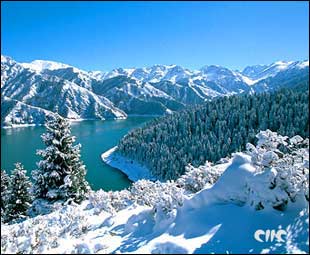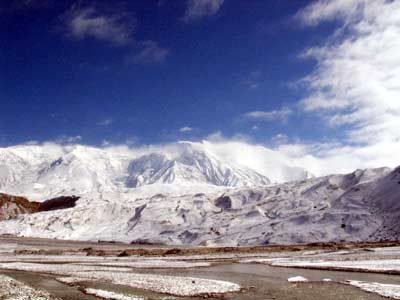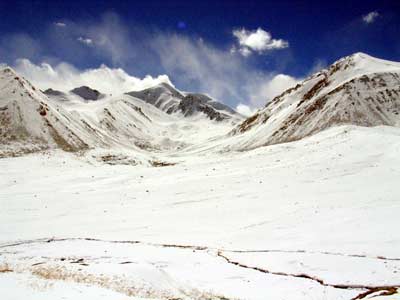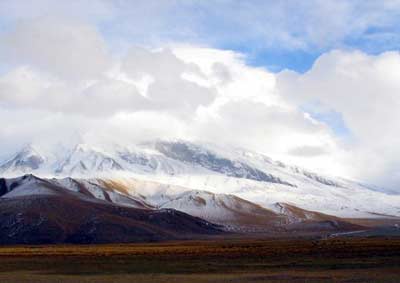| Home / Environment / Photo News | Tools: Save | Print | E-mail | Most Read |
| Shrinking Glaciers May Cause Second Lop Nor Catastrophe |
| Adjust font size: |
Located in Hami City, northwest China's Xinjiang Uygur Autonomous Region and as the source of several main rivers of the region, the Karlik Glacier is shrinking with every passing year, the Xinjiang Daily reported on November 30.
The Karlik Glacier stands 4,888 meters above the sea level. "The main reason leading to the thawing of the glacier is the overuse of nearby natural grasslands in the past decades," said Chen Xingguang, director of Hami City's Water Conservancy Bureau. "Over-using and over-herding have made the grasslands degenerating severely. Bare black lands absorb a great deal of sunshine in summer. The sharp rising of temperature certainly speeds up the thawing of glaciers," Chen explained. Chen visited Karlik three times. During his first trip there in 1987, Chen marked a stone near the snow line to facilitate later glacier-thawing research. To his alarm, the snow line had retreated by 5 meters 15 years later when Chen paid his second visit to the area. "The glacier is actually a solid reservoir itself and the 5-meter backwardness means that at least 200 million cubic meters ice and snow have disappeared," Chen said. Chen returned to the area in September this year seeing another shrinking of 1.5 meters. "No doubt the thawing of glaciers is speeding up," Chen worried. The more shocking scene was the layer of black soil particles on the surface of glaciers. "These particles have stepped up the thawing of glaciers so much that streams are forming along the glacier," Chen said. "The thawing snow-water not only irrigate the grasslands and farmlands of nearby Yiwu and Balikun areas, but also flow to Hami City," Chen said. "To Hami, an extremely dry city, the rapid thawing of the glacier is disastrous," Chen said worriedly. The Karlik Glacier used to be a clean and clear area, Chen said. Local geological statistics show that in 1955 Hami City's agricultural department knowingly spread coal ash on the surface of glaciers to relieve prolonged drought. Today people have no need to do that. The clouds of dusts raised by the fierce wind and swarms of cattle and sheep running swiftly are enough to thaw the glacier rapidly. Vegetation around the glacier has been shaped by millennia of rain and snow. "I remember the grasses at the foot of the glacier were knee tall when I was small," said an old man of Kazak ethnic origin. Luxuriant vegetation is functional to conserve the water source of glaciers. "A rain in the mountain might flow in the river at the foot of the mountain for seven days at that time. Now a rain flows only for three hours," he said. A sudden downpour may even form turbulent torrents and mud-rock flow, resulting in heavy soil erosion, Chen Xingguang said. "Would Hami City become the second Lop Nor several decades later if we let things drift like this?" Chen raised the question. Lop Nor was a vast salt lake now entirely dried up. About 82 percent of the glaciers in west China have shrunk in the past 50 years as the temperature has risen by 0.2 degrees Celsius every decade, according to research published by the Cold and Dry Zone Environment and Engineering Research Institute under the Chinese Academy of Sciences.
(China.org.cn on translated by Li Jingrong, December 1, 2006)
|
| Tools: Save | Print | E-mail | Most Read |
 |
| Related Stories |




